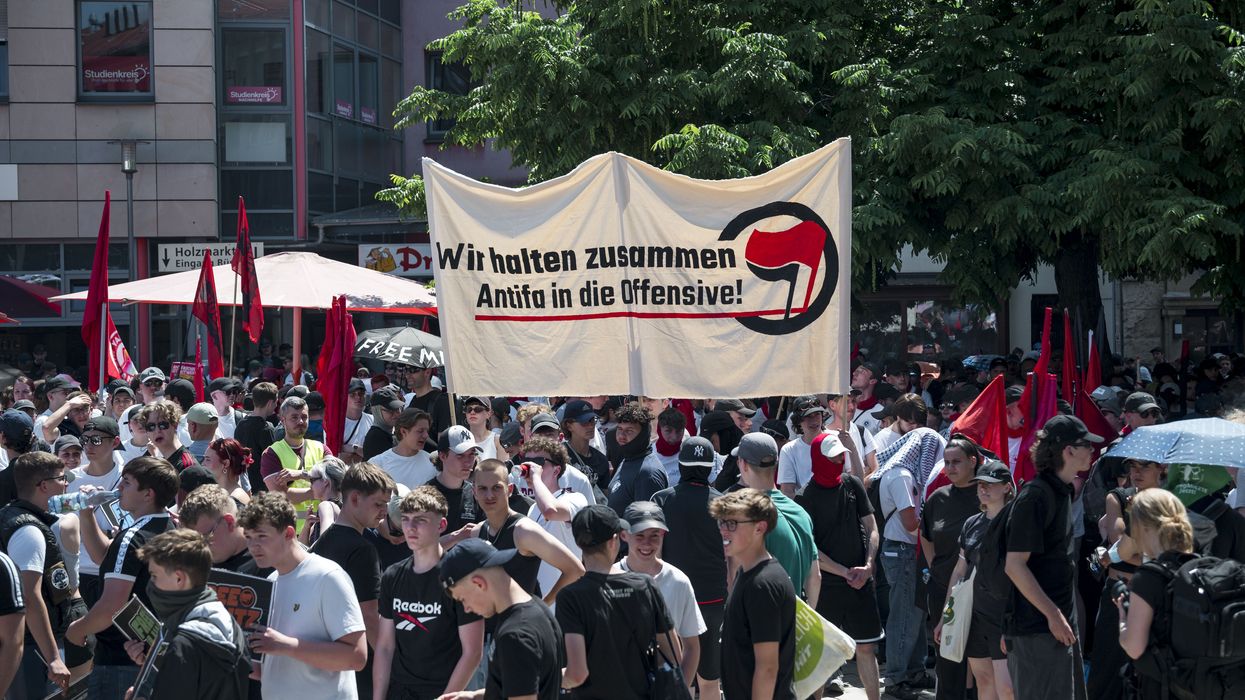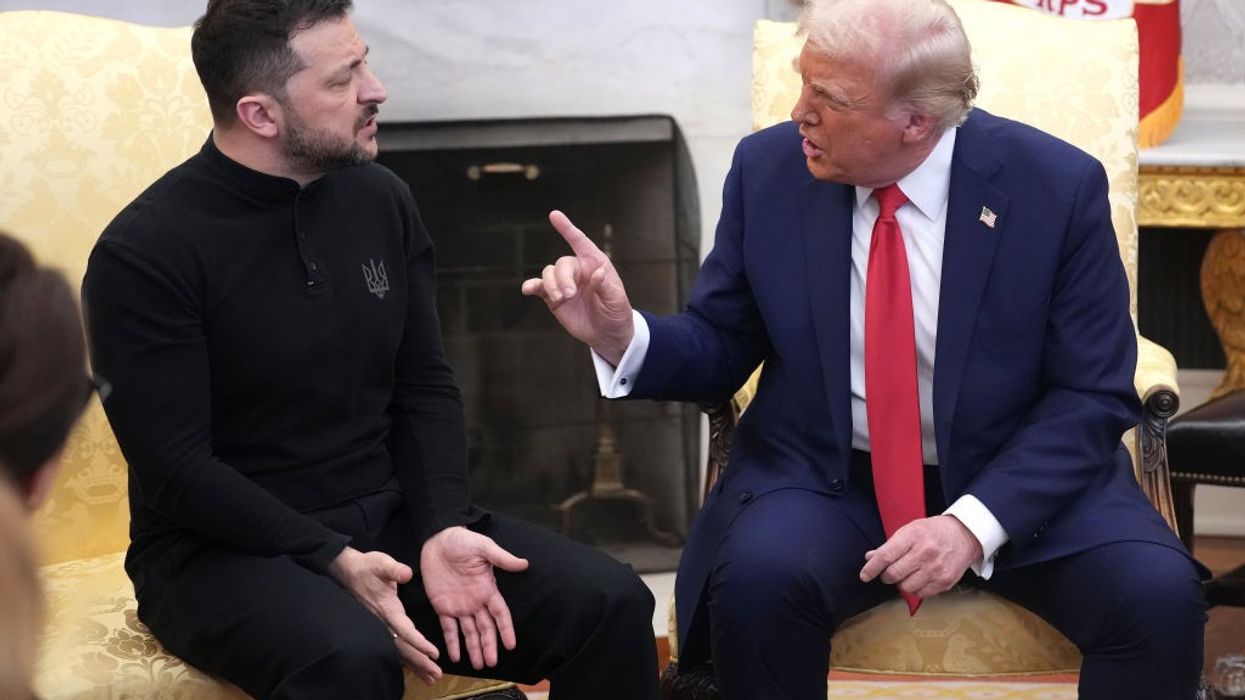Broadening Assault on the Left, Trump Designates EU Anti-Fascist Groups as ‘Foreign Terrorist Organizations’
Investigative journalist Ken Klippenstein warns that the designation opens up US citizens to government surveillance, asset seizure, and material support charges.
President Donald Trump's State Department on Thursday broadened his efforts to use "terrorism" to crush his enemies on the left, designating four European groups as "foreign terrorist organizations" based on their alleged connections to the vaguely defined network of leftist agitators known as "antifa," short for "anti-fascist."
Following the assassination of right-wing activist Charlie Kirk in September, Trump turned his attention toward waging a war on left-wing protest groups and liberal nonprofits, describing them as part of a vast, interconnected web that was fomenting "terrorism," primarily through First Amendment-protected speech.
As part of that effort, Trump formally designated "antifa" as a "domestic terrorist organization," even though it is not a formal group with any structure, but rather, a loose confederation of individuals all expressing an amorphous political belief. Civil rights advocates warned that the vague nature of the designation could be extended to bring terrorism charges against anyone who describes the Trump administration's actions as fascist or authoritarian.
Shortly after, Trump also signed a little-reported national security order, known as National Security Presidential Memorandum 7 (NSPM-7), which mandated a “national strategy to investigate and disrupt networks, entities, and organizations that foment political violence so that law enforcement can intervene in criminal conspiracies before they result in violent political acts.”
Some of the indicators of potential violence, the memo said, were “anti-Americanism, anti-capitalism, and anti-Christianity," "extremism on migration, race, and gender," and "hostility towards those who hold traditional American views on family, religion, and morality.“
Referencing NSPM-7 explicitly, the State Department on Thursday spread that crusade against the left overseas, slapping four German, Greek, and Italian anarchist groups with the label of "foreign terrorist organization" (FTO). The same designation has been given to groups like al-Qaeda, ISIS, and al-Shabaab.
The groups targeted were Antifa Ost in Germany; the Informal Anarchist Federation/International Revolutionary Front (FAI/FRI) in Italy; Armed Proletarian Justice in Greece; and Revolutionary Class Self-Defense, also in Greece.
The State Department said:
The designation of Antifa Ost and other violent Antifa groups supports President Trump’s National Security Presidential Memorandum-7, an initiative to disrupt self-described ‘anti-fascism’ networks, entities, and organizations that use political violence and terroristic acts to undermine democratic institutions, constitutional rights, and fundamental liberties.
Groups affiliated with this movement ascribe to revolutionary anarchist or Marxist ideologies, including anti-Americanism, ‘anti-capitalism,’ and anti-Christianity, using these to incite and justify violent assaults domestically and overseas.
Each of the accused groups has had members charged with or convicted of violence, often against Neo-Nazis or adjacent far-right causes. But while they are more organized than America's anti-fascist movement, they are still broad-based and diffuse.
Mirroring what studies have shown in the US, the far-right is responsible for the overwhelming bulk of political violence in the European Union. A 2024 study by Armed Conflict Location and Event Data (ACLED) found that across Europe, the far-right was responsible for 85% of the violent targeted incidents they tracked.
Though Greece was one exception, where far-left violence was more prevalent than far-right violence, Mary Bossis, an emeritus professor of international security at Piraeus University in Athens, told The Guardian that Greece's anti-fascist movement has little to do with it.
"It is highly exaggerated to say that the antifa movement in Greece employs terror tactics," she said. "They even run in elections and have never shown any sign of violence.”
While most social movements have some violent adherents, Bossis said, "that does not mean, as in the case of antifa, that the whole movement is either violent or supportive of terrorism. In fact, it is very much not the case… Standing against fascism does not make someone a terrorist.”
As Mark Bray, a Rutgers University professor who teaches a course on the history of antifascism, pointed out in The Guardian, Antifa Ost is the only one of the four groups designated by Trump that self-identifies as anti-fascist.
“The others are revolutionary groups,” he said. “This shows how the Trump administration is trying to lump all revolutionary and radical groups together under the label ‘antifa’. By establishing the (alleged) existence of foreign antifa groups, the Trump administration seems to be setting the stage for declaring American antifa groups (and all that they deem to be ‘antifa’) to be affiliated with these supposed foreign terrorist groups.”
Ken Klippenstein, an independent investigative journalist who has warned about NSPM-7 since its release, noted that this marks the first time that an entity in any of these three European countries has ever been slapped with the label of an FTO.
"The move seems an attempt to make people accustomed to white Westerners being treated as terrorists," he wrote Thursday. "That, after all, is the goal of Trump’s national security directive NSPM-7."
While there is no law on the books to back Trump's designation of antifa as a domestic terrorist organization, there is such a designation for foreign terrorist groups.
Being designated as a member of a foreign terrorist organization can subject one to significant sanctions, including having assets in American banks frozen, being unable to enter the country, or being prosecuted for "material support."
The government has used accusations of terrorism to go much farther, including carrying out extrajudicial assassinations of targets. Over the past two months, the Trump administration has bombed over a dozen boats in the Caribbean using the unsubstantiated justification that their passengers are "narco-terrorists" shipping drugs for cartels, which the administration has also designated as FTOs. The attacks have killed at least 76 people.
Attorney General Pam Bondi suggested last month that the Trump administration planned to use the "same approach" to antifa as it has with cartels, leading many to fear that might include assassinations.
Mehdi Hasan, the founder of the media outlet Zeteo, said the designation of these groups as terrorist organizations was "super bad for US citizens, especially on the left of the spectrum," because it "gives this authoritarian administration potentially the power to surveil and go after US citizens on spurious 'funding of FTO' grounds."
The State Department noted in a fact sheet on the designations that it is also seeking to target those in the US accused of supporting these groups.
"US persons are generally prohibited from conducting business with sanctioned persons. It is also a crime to knowingly provide material support or resources to those designated, or to attempt or conspire to do so," the memo said. "Persons that engage in certain transactions or activities with those designated today may expose themselves to sanctions risk. Notably, engaging in certain transactions with them entails risk of secondary sanctions pursuant to counterterrorism authorities."
Klippenstein said that while Trump's "domestic terrorist" designation was limited, "with an FTO designation, the gloves come off," opening Americans up to "FISA surveillance, seizure of financial assets, [and] material support charges."


